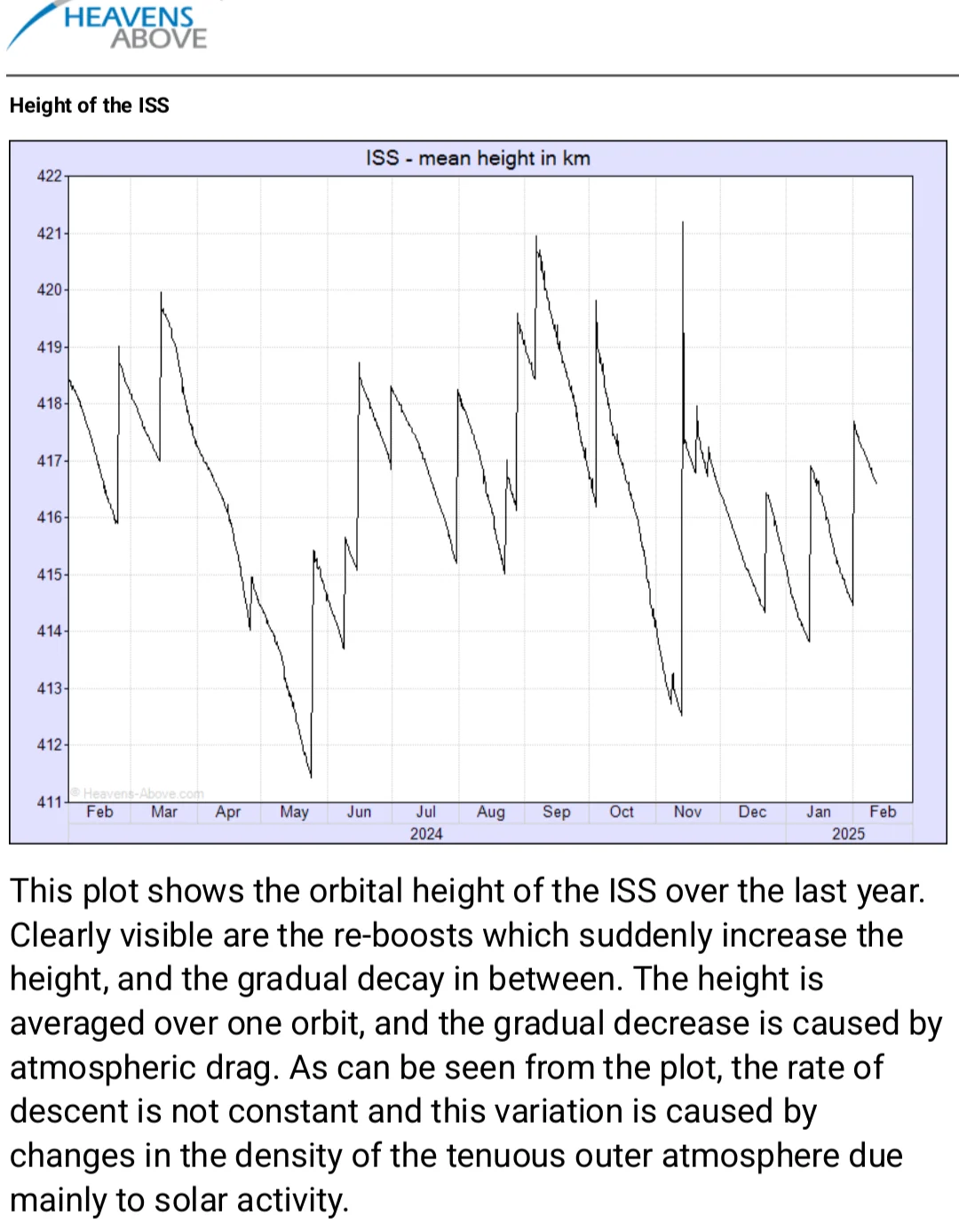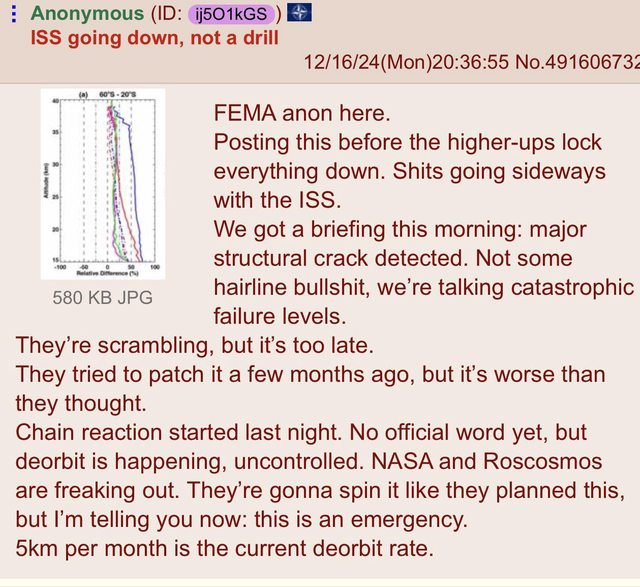I don’t know enough to check if this checks out, but I have enough faith in the lemmy community at this moment to believe someone will rush in to correct wrong information.
Here is a plot of the average altitude for the past year. Because the ISS’s orbit is so close to earth it is always losing altitude due to air drag and it is frequently being raised back up using the rockets attached to it.
The original post was from December 2024. It would be hard to notice a change in the rate by looking at this plot and if the rate of descent had changed, it could have easily started more than a year ago.

Edit: This post shows that at different times the ISS’s rate of descent ranged from 0.2km/month to 12km/month. This all using data prior to 2021. So the ISS seems well equiped to handle the 5km/month OOP mentioned.
this 4chan post is dated to december. I do not think the happening is happening
Kerbal made me just as worried about getting stuck in orbit as I was about getting there.
I stopped sending Jeb and Bill on the first manned flights because of that.
I feel like for something as high investment as the ISS is, there would be several planned ways to recover it from a bad situation before it was considered a loss and failure.
Even if all the air leaked out of the ISS, I doubt it would provide enough delta-V to deorbit the station. A leak is basically a poorly designed cold gas thruster.


